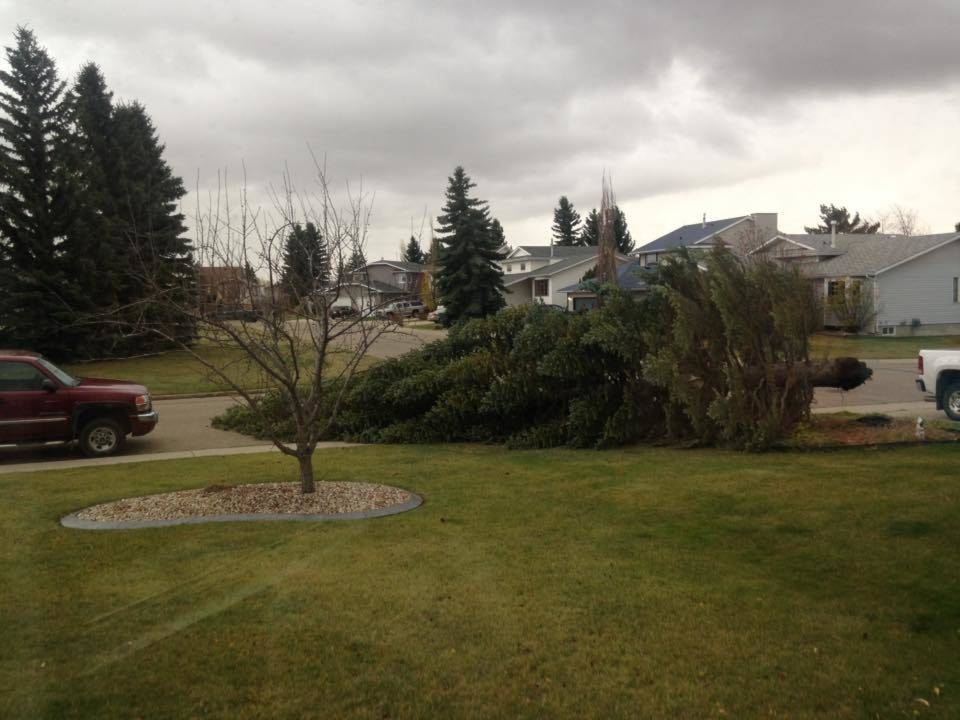Red Deer’s been the “epicentre” of strange windstorms that have twisted trees and blown over vehicles.
The high-wind events started in mid-May, devastated Red Deer parks in June, and are extending into the fall with Tuesday’s 100 km/h windstorm. It overturned a semi-tractor trailer near Blackfalds and rail cars near Huxley.
Although the latest gale wreaked the most havoc in southeastern Alberta, the earlier windstorms appeared to be attracted to this city, in particular.
“It’s been a very strange year for weather and Red Deer seems to be a focus,” admitted Environment Canada meteorologist Brian Proctor. “Red Deer has been an epicentre.”
Although local talk often turns to climate change, Proctor noted that this kind of high-wind weather, while a-typical, is not unheard of.
Usually, storm systems form in the foothills from a collision of hot and cold air currents, and move eastward, causing localized thunderstorms in the wide expanse between Edmonton and Calgary.
But this year, the jet stream that storms follow has hovered right over this city. As a result, “Red Deer was ground-zero” for thunderstorm activity, said Proctor.
While the Red Deer area didn’t see a lot of rain, he added this doesn’t mean thunderstorms weren’t happening in the stratosphere. During drought conditions, clouds hold less moisture and form at a higher altitude, creating the right conditions for the gale-force winds that have plowed through the city.
Red Deer parks manager Trevor Poth was expecting to get a deluge of emergency phone calls on Tuesday night that didn’t come in.
Compared to many municipalities in southern Alberta that recorded winds as high as 135 km/h, Red Deer got off lightly, he concluded. Some of the half-dozen calls city staff handled were about broken trees on private land, which are up to property owners to dispose of.
City workers assessed local parks on Wednesday and found little new damage. Poth said most shallow-rooted or dried-out trees had already fallen over or snapped from the two previous windstorms — including on June 20, when winds were recorded at 110 km/h.
This week’s storm was different than the more localized summer storms, since it formed from a low-pressure centre and swept through B.C., Alberta, Saskatchewan and Manitoba, said Proctor.
lmichelin@reddeeradvocate.com
Like us on Facebook and follow us on Twitter
